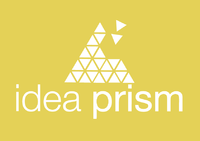IdeaPrism: Difference between revisions
No edit summary |
No edit summary |
||
| Line 1: | Line 1: | ||
{{Resources | {{Resources | ||
|acronym= IdeaPrism | |acronym= IdeaPrism | ||
|image= | |image= ideaprismLogoHR.png | ||
|project= | |project= | ||
|title= Title of resource | |title= Title of resource | ||
Revision as of 03:51, 2 November 2015
|
Idea Prism represents a major leap forward in the effort to scale up Structured Democratic Dialogues.
Its launching signals a revolution in meaningful communication between people. It is the first fully functional system that makes the the principles of science of complex systems, the Science of Dialogic Design, and Third-Phase Science in general, accessible to the general public. Idea Prism renders ordinary people into systems thinkers and system change makers.
Idea Prism was inspired, designed and developed by Future Worlds Center and its technology transfer office, subsidiary company Ekkotek.
What does Idea Prism do?
Idea Prism equips any user with the ability to launch a virtual Structured Democratic Dialogue and to harness the collective intelligence and collective wisdom of groups. All that is need is to give a dialogue a name, enter a smart Triggering Question to stimulate the discussion, and invite others to participate. Members of one's dialogue may contribute ideas in the form of single-sentence statements, and subsequently add one or two paragraphs as clarification. They can also shoot short videos clips right from their mobile device and upload a lively clarification to the cloud for others to consider. The App allows participants to ask questions, request further clarifications, choose ideas according to perceived importance, impact, desirability, feasibility etc. Furthermore, it applies Interpretative Structural Modeling to support participants to compare their ideas according to the influence they exert on each other and thus collectively construct Influence Maps. More importantly, using patent-pending Parallel Interpretative Structural Modeling Algorithms, future versions will allow individual maps of ideas to be overlaid mathematically thus harnessing collective wisdom of larger numbers of individuals participating in the same dialogue.
The current App allows one to collect and view all ideas on an issue, export, email, print and/or share them in multiple environments.
